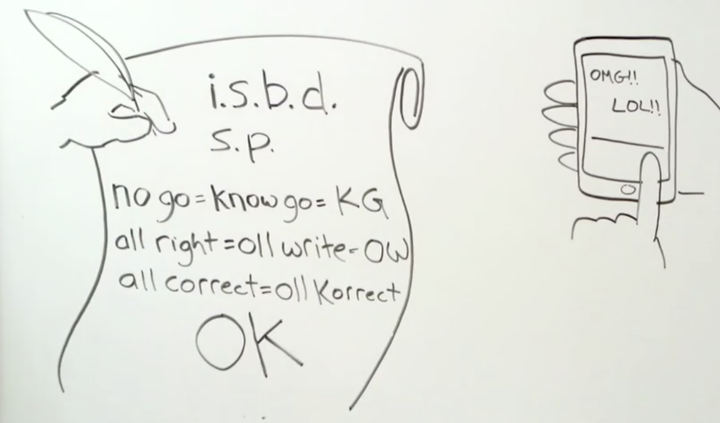”OK” may be one of the most commonly used words in America.
Want to grab a drink after work? OK. How are you feeling? I’m OK. Justin Bieber is the best singer of all time. OK ...
But did you know that every time you throw “OK” around you’re using the 1840s slang equivalent of phrases like “bae” or “it’s lit fam”?
As explained in the Mental Floss video above, late lexicographer Allen Walker Read traced OK’s origin back to a Boston newspaper editor who in 1839 used the initials as a trendy, clever way of saying “oll korrect,” or, more accurately, “all correct.”
The editor was playing into a popular 19th century trend in which writers would playfully abbreviate and misspell their words. For example, they’d use “KG” to say “know go,” which means “no go.” It’s similar to how people today use “bae” for “baby” or “before anyone else,” or how millennials will text “it’s lit fam” to describe to their friends that something is amazing or fun.

But “OK” came around at a time when catchy phrases are most important: a presidential election.
During Martin Van Buren’s 1840 bid for president, his campaign turned his nickname, “Old Kinderhook,” into a hip and catchy slogan: “He’s Old Kinderhook and he’s oll korrect.”
More than 170 years later, “OK” has all but taken over.
Want to know the rest of “OK’s” history? Watch Mental Floss’s video above, OK?
